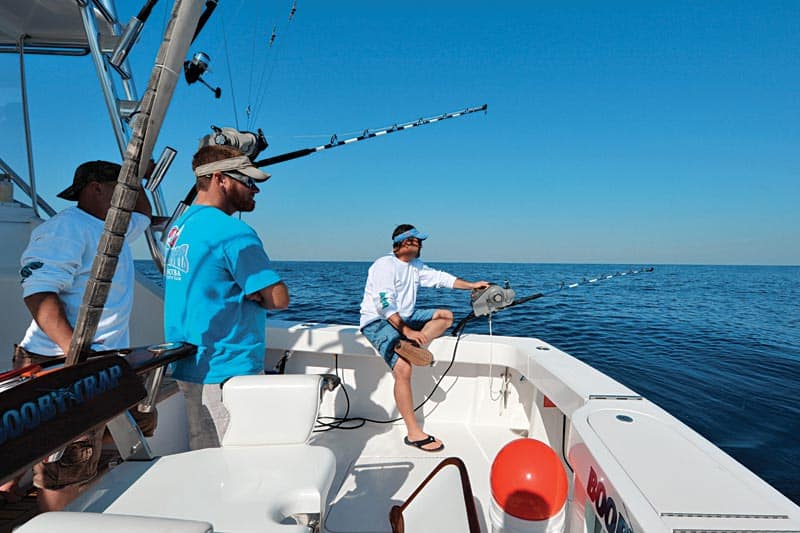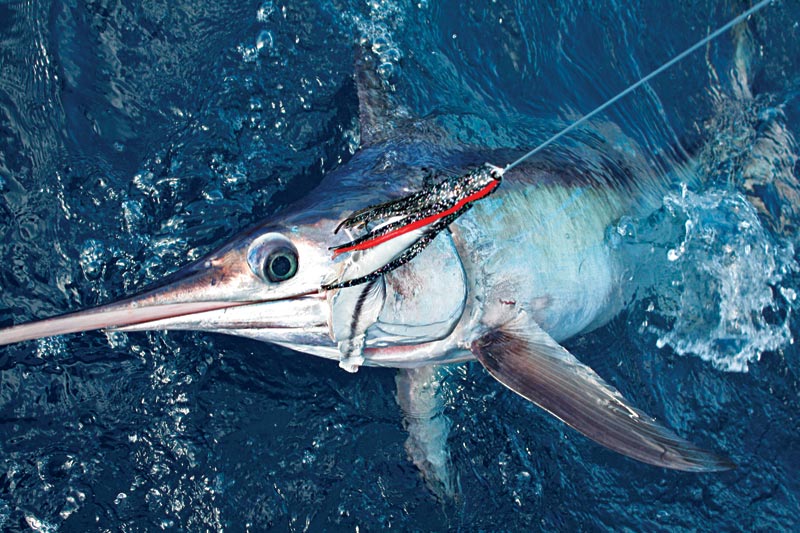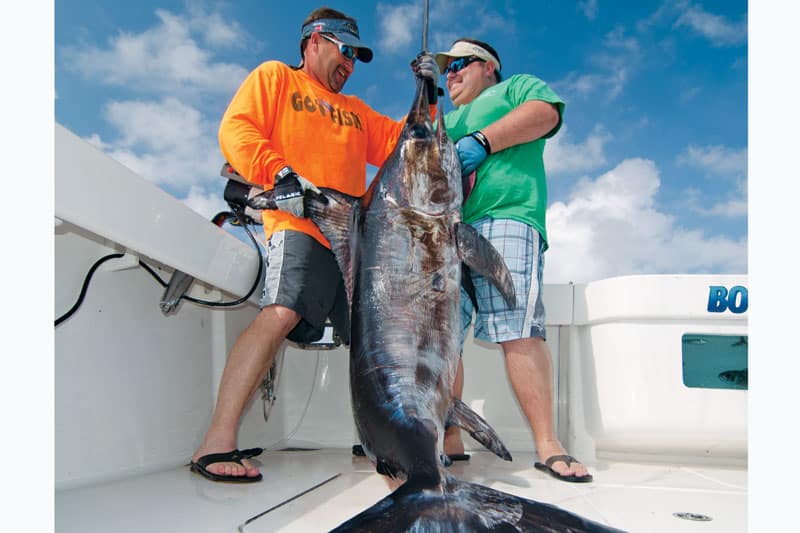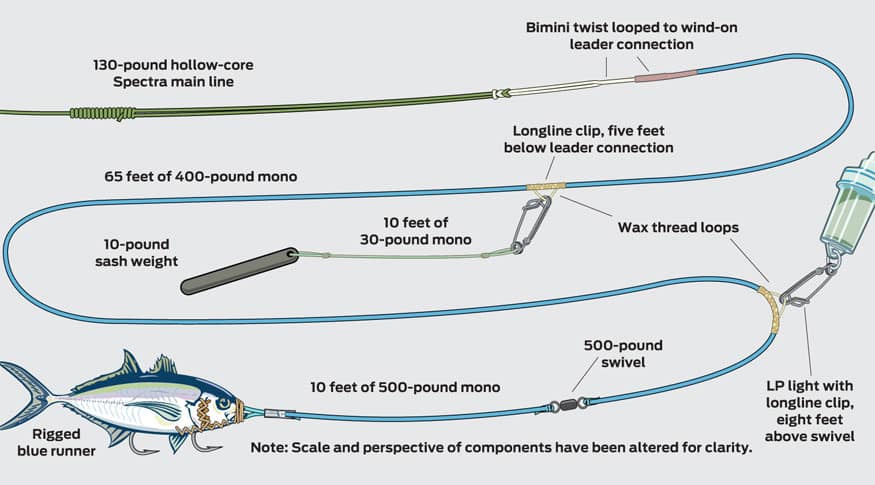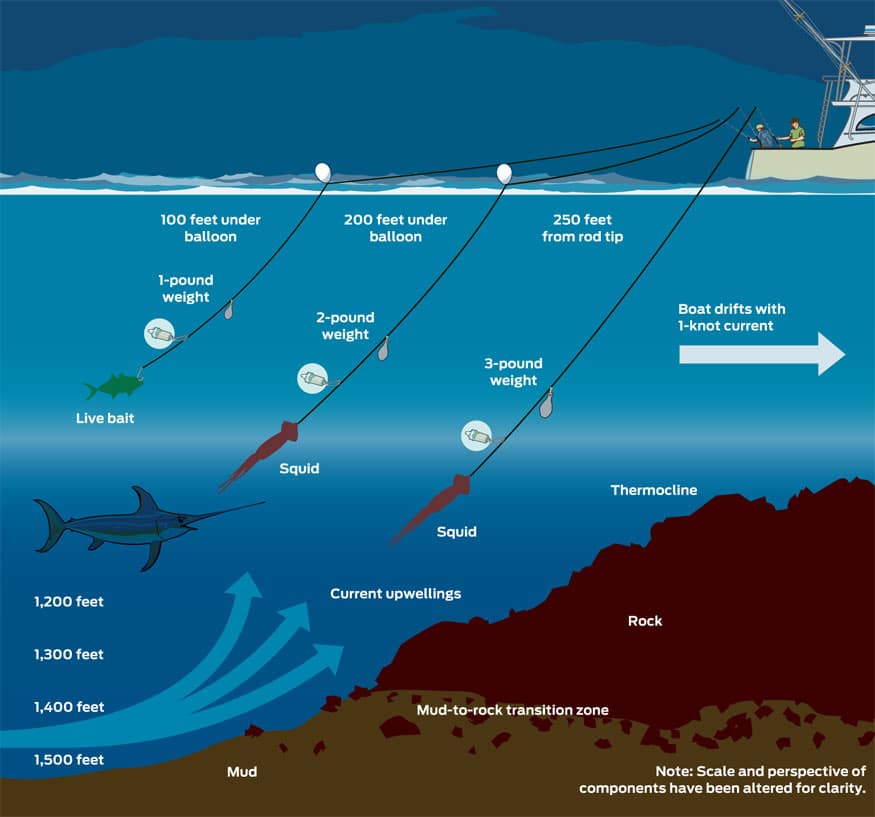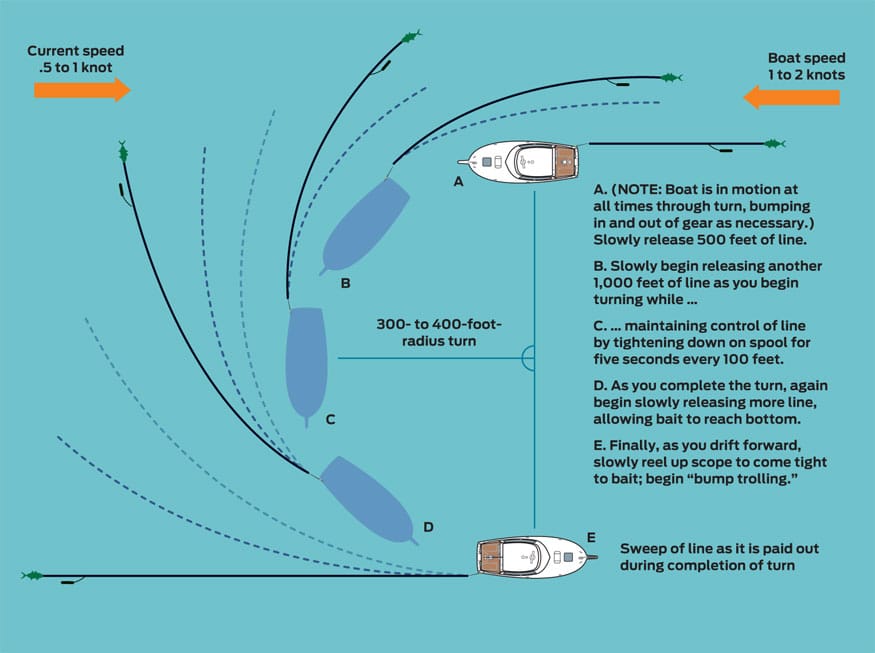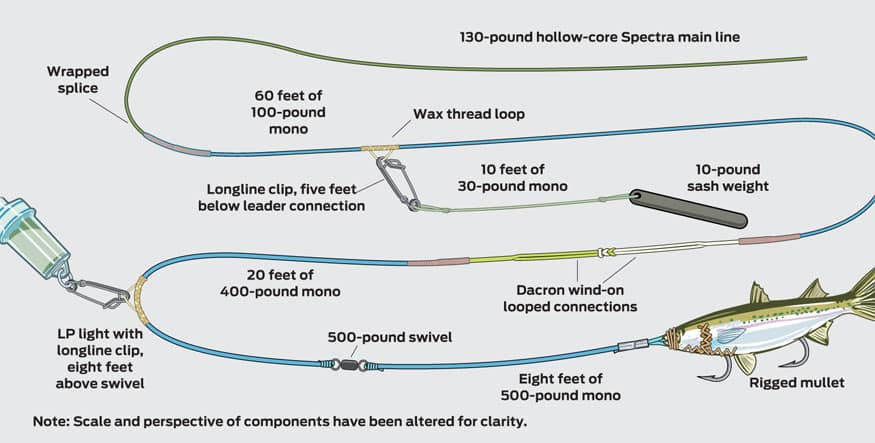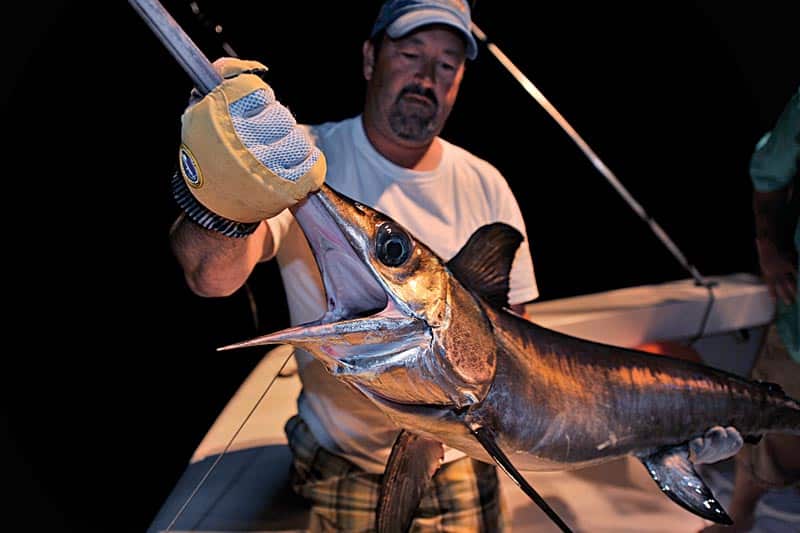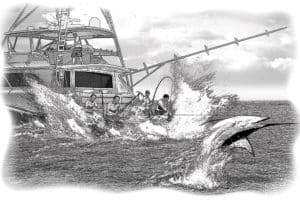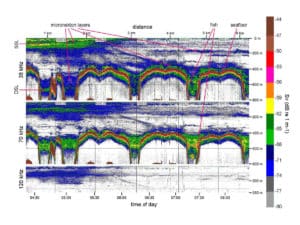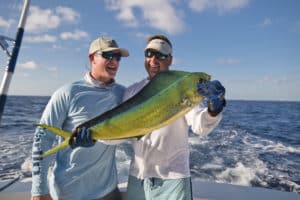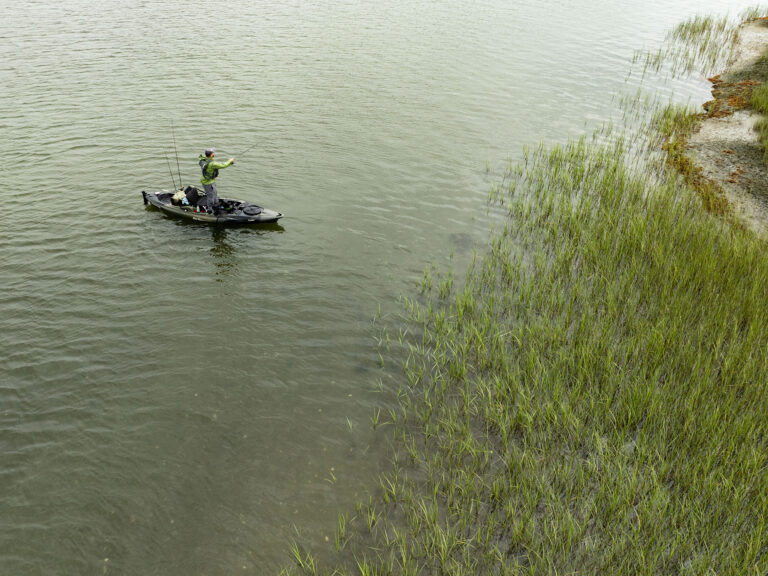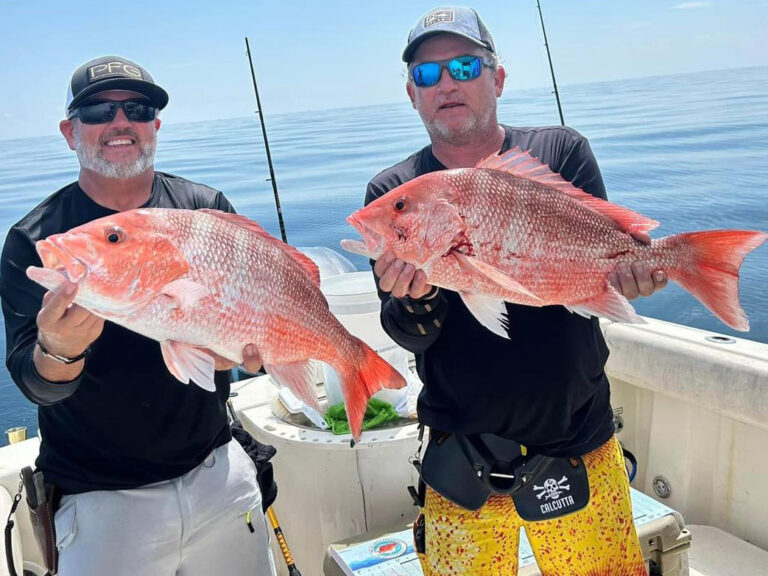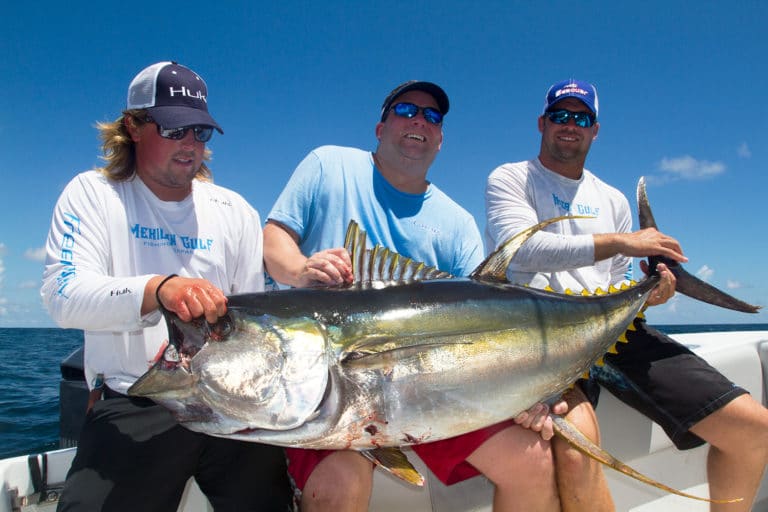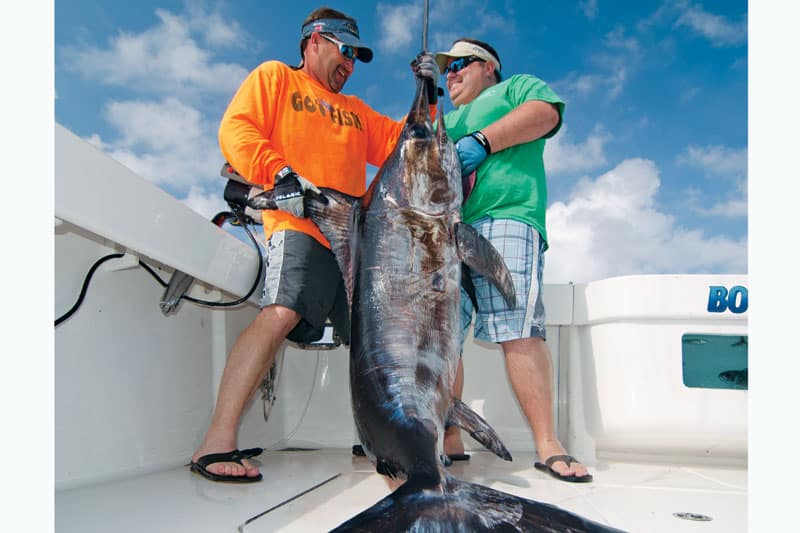
Texas Swords
Think “Texas fishing,” and swordfish probably aren’t the first game fish that leap to mind. Just don’t tell that to a growing cadre of Lone Star broadbill enthusiasts. Not so long ago, the idea of running 75 to 100 miles or more offshore into the Gulf of Mexico to try for swords would have bordered on the bizarre. But in the past couple of years, that cat’s been slinking out of the bag.
Suddenly swordfish are all the rage among Texas fishermen with offshore-capable boats. Evidence admittedly anecdotal but also pretty irrefutable suggests Texas swords have been increasing in both abundance and average size. That, along with empirical discoveries of which tackle and techniques work most effectively off this coast, means there’s never been a better time for gearing up to tangle with broadbill in the northwestern Gulf.
One Man’s Obsession
It’s unlikely that any individual has had more to do with the explosion of interest in catching Texas swordfish than Brett Holden.
What the obsessive vision of Devil’s Tower was to Richard Dreyfuss in Close Encounters of the Third Kind, Texas swordfish became to this Houston roofing-company owner, starting in the late 1980s. That’s when his friend and mentor, Bill Thurber, decided he wanted to catch swordfish. Thurber headed offshore out of Matagorda one evening, gave it a shot and came up snake eyes.
Holden started to accompany his friend in the quest next trip out. That time, “we caught five — and they were all 15 to 30 pounds,” Holden recalls.
Albeit those five pups together barely equaled one good sword by today’s standards, they were enough: Holden’s obsession was sealed.
“Since then, I’ve fished about every rock there is out there in 1,000 to 2,500 feet,” he says. For the past 23 years, Holden has fished the Gulf’s high seas out of centrally situated Freeport, now logging 100 to 150 days per year. While he does fish for and catch plenty of other species of game fish, target No. 1 remains the broadbill.
Holden has caught more than 300 Texas swords, releasing many, in recent years aboard his 52 Viking express Booby Trap, docked at Surfside Marina. Holden and his team have had 10-swordfish nights (with up to 20 shots) and eight-swordfish days (all eight, up to 300 pounds, were released). He’s studied the fish and its fisheries (traveling to Florida just to learn how experts out there had dialed in daytime swording), experimented at length, and adapted techniques to fit Texas’ particular situation. For years, Holden made every effort to keep Booby Trap’s swordy secrets on the down low; now, he’s come full circle and wants to share what he’s learned, so others can enjoy the burgeoning swordfish populations off Texas.
**
Bigger and Bigger**
While Holden has no scientific data (nor does anyone) quantifying broadbill stocks in the northwestern Gulf, his extensive experience leaves little doubt that the species is alive, well and thriving off Texas.
Not only have numbers held up very well, the fish are clearly averaging a larger size. “I’ve watched fish over the past 20 years get progressively bigger out there — no question about it.” He says that the average weight in the late ’80s remained a paltry 25 to 40 pounds. “But now most of our fish will run 50 to 125 pounds at night, and 80 to 250 during the day.” Booby Trap’s biggest swordy to date came in just over the 600-pound mark.
That’s not to say there aren’t bigger swords down there — much bigger. “I’ve always dreamed of catching a thousand-pounder,” Holden admits. “And I’m pretty sure I’ve hooked a couple. Last summer, I hooked what was definitely the most powerful fish I’ve ever had on a line. We got a look at her,” Holden says of the broadbill in broad daylight. “She surfaced, with her head out of the water, behind the boat. If I’ve ever seen a grander, she was it!” But it wasn’t to be: After four-and-a-half tense hours, the hooks pulled. “She didn’t seem the least bit tired at that point, either — though the reel began sounding like it was close to seizing up!”
Florida Tricks — Texas Style
Holden acknowledges that he began swordfishing knowing exactly nothing about best gear or strategies. “When I started, I had never heard of anyone even trying for swords off Texas. I’d never heard of a light stick. There were no magazine articles to guide me,” Holden says. “We just learned from scratch, over thousands of hours of fishing.”
Once he’d gotten the hang of swordfishing by night, the early success of day droppers off Venezuela and then Florida convinced Holden such techniques, perhaps with modification, should work for Texas swords as well. “So I packed up the boat, and we left for Florida!” They caught fish there and, “we learned the basics.” That includes the critical appreciation for the fact that “the fishing off Florida is 100 percent different from the fishing here, off Texas. We found out that when you try to fish daytime Florida-style here, you end up with a tangled mess.” (Much of that, as explained below, has to do with current.)
While it took some time to fine-tune their techniques, the Booby Trap crew (Jeff “Socks” Wilson, Shayne “dot.com” Ellis, Travis Joyce and Brett Holden, captains all) knew right off the effort was worth their time: “The first day we tried it, we went five for nine,” the angler says.
In fact, Holden — a pioneer in Texas daytime dropping for swords though he’s doing it for only a couple of years — uses what he describes as basically the same rig as in Florida; it’s the deployment that he’s had to adapt to Texas fishing. “During the day, fishing off Florida, we had 2 or 3 or even 4 knots of current. Here off Texas, the average is about .7 knot.” The trick is to keep the bait moving, at about 2 knots, says Holden.
Off the Deep End
It’s not only the bait that must be in motion but the line — as much as several thousand feet of it. That, of course, stems from the depths fished, generally 1,600 to 2,000 feet. And in that regard, diurnal fishing off Texas is indeed much the same as off Venezuela or Florida or most anywhere. That’s because swords follow what’s known as the deep-scattering layer toward the surface. And that’s where Holden wants his baits to be. The Booby Trap team has learned to start daytime drifts on the deep side of seamounts or slopes (since prey and swords both tend to associate with structure) and move shallower, typically around 2,000 to 2,500 feet, then following its ascent to 1,200 to 1,400 feet. “My favorite depth in the daytime is 1,625 to 1,775,” he says.
At night, he fishes over shallower grounds, usually 1,000 to 1,200 feet, setting baits from the surface to as deep as 250 on bright nights or 350 on dark nights. “Watch for the thermocline,” he advises, “and put bait just above, below and on it.
“Swordfish often bite gingerly, particularly in the daytime. You’ve got to be really determined,” he says. “The whole time a rod is out deep, we never take our eyes off the tip. Too many guys wait for the rod to really bend; we like to see it twitch, then start taunting the fish by reeling to move the bait away.”
He also advises keeping some baits right on the bottom. “I like to drag a bait through the mud and cause a commotion.”
**
Swordy Smorgasbord**
Swordfish are opportunistic diners, and Holden has learned be an opportunistic angler, offering Gulf swords a variety of live baits including hardtails (blue runners), mullet, rainbow runners, tinker mackerel (his favorite livey; catch ’em while they swim within bright boat lights at night over seamounts). Baits as large as bonitos (little tunnies) weighing two or three pounds sometimes produce also.
His offerings generally include fresh, dead baits as well, with squid a top choice. “We buy the large squid at the Chinese market (rather than at bait stores) — $1.25 to $1.75 a pound in 60-pound flats. They run one to two pounds apiece. That’s been a secret of ours, but one I don’t mind letting out,” Holden says. “Baitmasters four-packs of medium swordfish squid are great for night fishing,” Holden adds, though they’re likely to run a bit small for daytime swords — and “the bigger the squid, the better.”
While squid’s a great go-to bait, “for daytime, I’d say my favorite is a split — butterfly-cut — mullet or Spanish mackerel about a foot long. But we’ve caught plenty on strip baits, such as tuna bellies or wahoo bellies behind a skirt,” says Holden. “We do a lot of stitching and sewing on our daytime baits to keep ’em together while swords are beating on ’em 1,700 feet down.”
**
Upbeat on Upwellings**
As far as where to fish, Booby Trap generally fishes 75 to 125 miles out: “Anywhere along the 300-fathom curve off the Texas coast is prime swordfish country,” he says. A good suggestion for starters — “the Hilltops,” an area of irregular bottom about 80 miles out of Freeport. Holden suggests finding that spot and others on Hilton Charts (hiltonoffshore.com).
More general advice: “Fish the upwellings” around structure. “Watch for thermoclines where, for example, it might make a weird jump on the screen from 200 to 170 feet or the like,” Holden says. “Stay where you see the thermocline go up or down.” If it’s at night, look over in the lights— you’ll see all kinds of weird stuff like jellyfish and strange critters — and that’s where we tend to get multiple bites.” And that’s the sort of place to leave out a line or two even (or especially) after a sword is hooked, rather than clear lines quickly as many crews do. “We get a lot of doubles that way,” says Holden.
When it comes to the when of Texas swordfishing, Holden says, “We’ve caught swords every month of the year,” but hastens to point out that the long run makes getting out much of the year iffy and often a spur-of-the-moment opportunity. Planning trips — especially multiday adventures (Booby Trap normally stays out two to FIVE days, fishing mostly nonstop) — makes more sense from about mid-May through September (barring tropical-weather systems).
Holden definitely plans his offshore sword trips by the moon. The front side of a waxing moon is always preferable, with the real peak the three days prior to full, according to years’ worth of Booby Trap logs. “Just after the full moon, the fish seem more finicky,” he adds.
**
Trolling by Moonlight**
Booby Trap uses both electric and manual reels for swords. While prospecting deep for broadbill by day, the crew will rely on electrics. “Once we’ve found the fish, we like to go to conventional (manual) reels,” says Holden.
Holden’s definitely a believer in lights. He particularly likes to put over a 12- or 24-volt, 33-inch swordlight (swordlights.com) in blue or green with a 30-foot cord. “It makes a really big ring of light and attracts all kinds of bait to the boat,” he says. Louisiana fishing writer Will Smith says he had never seen such hordes of squid offshore at night as off Texas, on Booby Trap.
Their team uses light sticks on lines at night liberally — including when slow trolling. “Yes, we have caught swords at night, trolling. It definitely works.” If the sargassum isn’t too bad, they’ll put out a bait on a downrigger, set at 150 to 300 feet, with 200 optimal. “Put the light stick 15 to 20 feet in front of the bait and troll at 2 or 3 knots. It’s a great way to find fish, especially if it’s a slow night, because you can cover a lot of ground.” Holden prefers double-hook rigs for nocturnal trolling.
A few years ago, this feature wouldn’t have been possible because no one really had so much insight into how to catch Texas swordfish. A couple of years ago, it wouldn’t have been possible because the best source of that information had no interest in sharing it. “We were very secretive about our information,” says Holden. “But now, I’m really into watching the sport grow: It’s a blast seeing people getting into it!”
Some evidence to prove that: Last spring, the Booby Trap team conducted a local seminar at Surfside (Texas) Marina on swordfishing (with all proceeds going to Everyday Heroes, a disabled-veterans organization). Event planners figured on 100 interested anglers showing up; in fact, 500 attended the seminar. The presenters’ reputation also had crowd appeal: Booby Trap has been named the top boat for the state four years in a row by the Houston Big Game Fishing Club. Holden, who organized the event, is already planning the second annual for March 2012, and promises it will be both bigger and better. For more information, visit www.boobytrapfishingteam.com.
